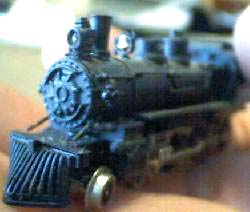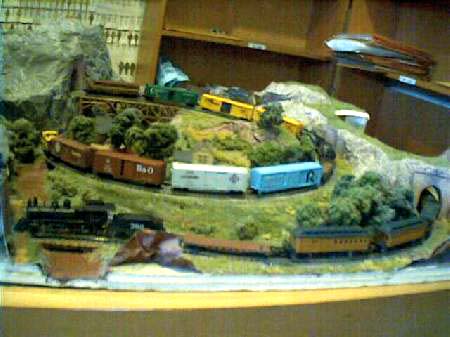
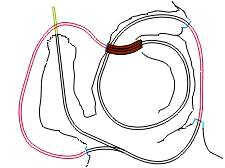
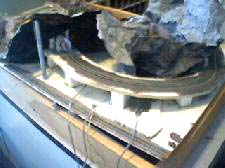
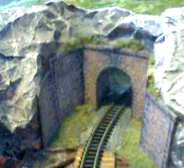
The first step after assembling |
This shows basic construction. The bottom foam board was left whole as a lightweight layout base. Then I cut a second foam board about 3x the track width for the bed. You can see that I use the paint for glue. |
This shows the results of the printed masonry and the paper rocks. This portal is nearly hidden at the back of the layout |
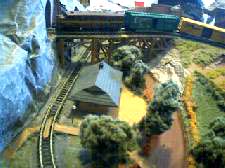
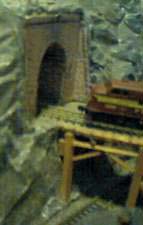
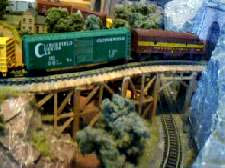
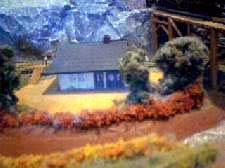
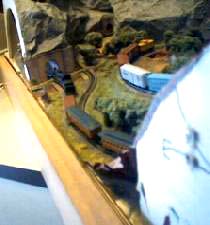
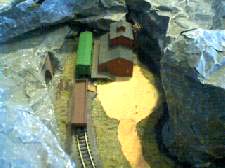
| A closer view of the station. When I built this layout, the only affordable buildings were the Marklin blocks of cast rubbery plastic. I couldn't put lights in them, but I did manage to paint the windows, doors, roofs and chimneys. | This view, in addition to a clear look at my one turnout, shows the microswitches I installed to control it. Again the wires are grooved in to the bottom of the table. I was planning to build my own super throttle control. | This is the blind canyon that the spur line runs into.there's another painted building from Marklin with another lamp post. Note also the man-sized mine entrance and the barely visible sluice used to supply "water" to the factory. |


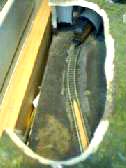
| Not much to say about the farm house. It's another Marklin. I tried to show the walkway and flower gardens, but couldn't bet them to show up. No lamp posts here, but note the wood bridge across the stream. | The garden was easy. You just paint the ground "dirt" then when it dries paint a line of dirt and sprinkle plants in it. The shed and a picnic table had to bebuilt from scrap "lumber". | A mountain sits here unless a train gets stuck. To reduce that I put in a custom re-railer. |

